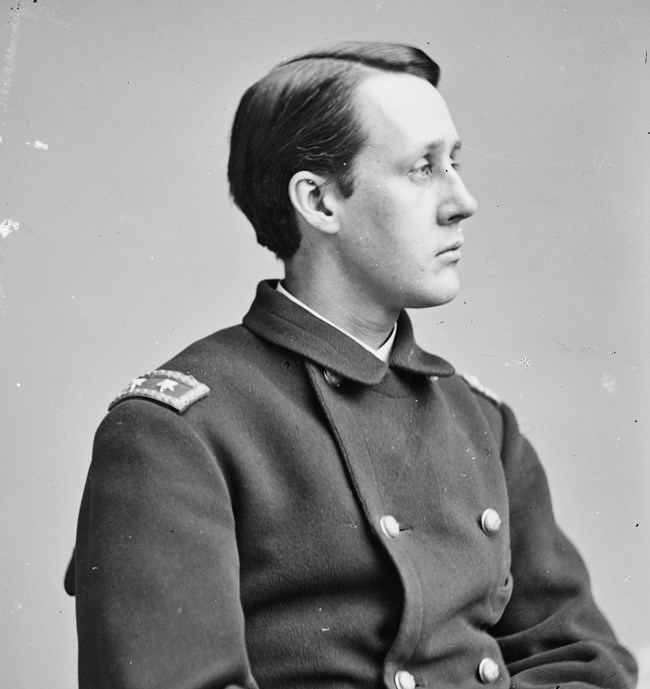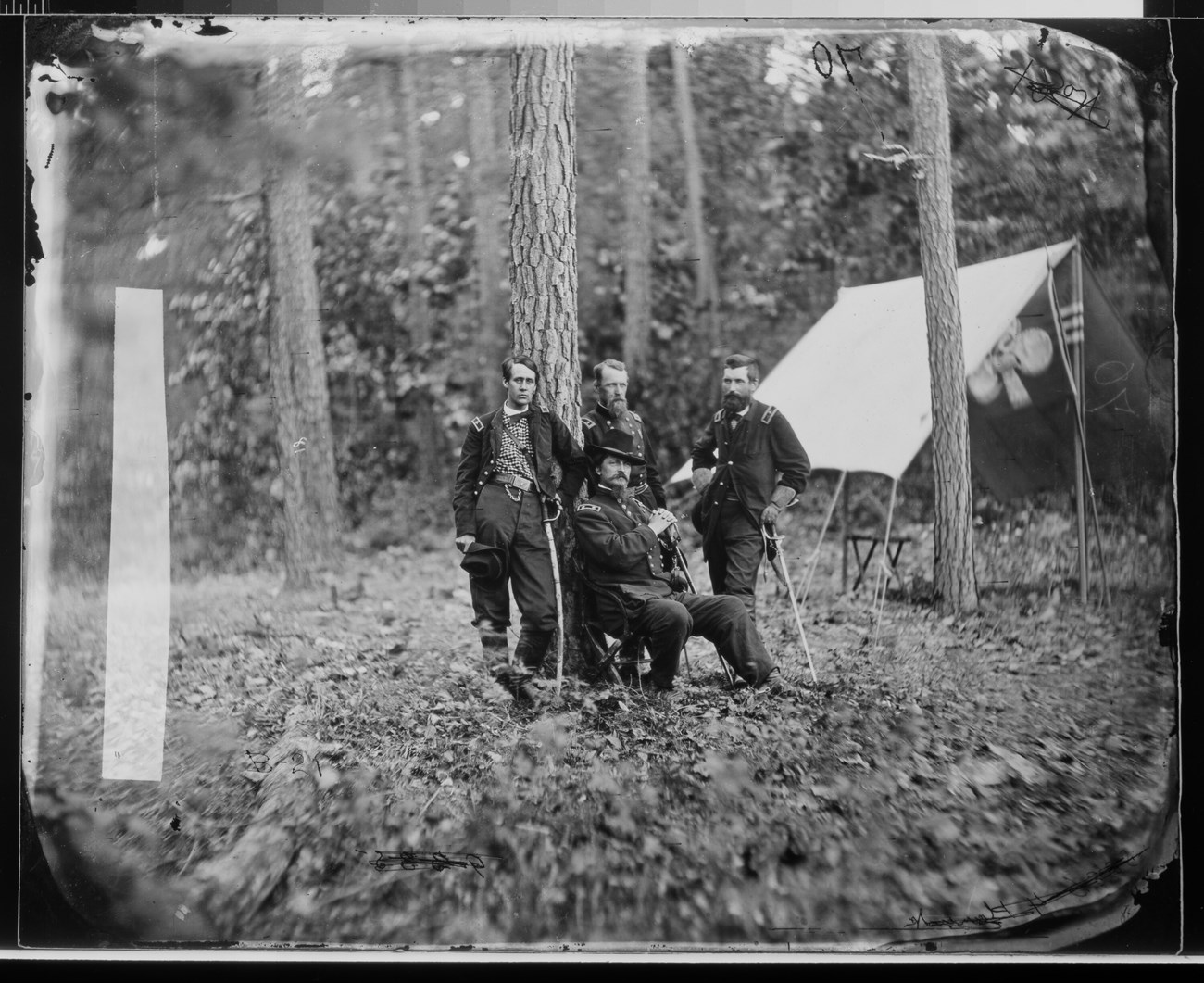Last updated: October 14, 2020
Article
Francis Barlow: Rising Through the Ranks

Library of Congress, prints and photographs division
One of several “Boy Generals” during the Civil War, Francis Barlow’s looks were deceiving. Slightly built, clean shaven, with a high-pitched voice, he was nevertheless a demanding officer who would tolerate no dereliction of duty on the part of his men. Col. Theodore Lyman, an aide to Maj. Gen. George G. Meade described Barlow this way: “He looked like a highly independent newsboy; he was attired in a flannel checked shirt; a threadbare pair of trousers; from his waist hung a big cavalry saber; his features wore a familiar sarcastic smile…{yet} it would be hard to find a general officer equal to him.”
Barlow’s rise through the ranks was not the result of any military training prior to the Civil War. Graduating from Harvard Law School at the top of his class in 1855, Barlow was working at the New York Tribune at the outset of the war. One day after his marriage top Arabella Griffith, Barlow enlisted in the 12 NY Militia as a private. Barlow rose to become a highly successful general officer solely on the basis of his abilities as a soldier.
On September 17, 1862 Col. Barlow found himself and his regiment in front of the infamous Bloody Lane at Antietam. Severely wounded while leading his troops in pursuit of the retreating Confederates, Barlow was eventually nursed back to health by his wife, Arabella, a nurse with the U.S. Sanitary Commission. A promotion to Brevet Brigadier General preceded his next combat experience at the Battle of Chancellorsville in May, 1863. Since his brigade (part of the XI Corps) was off supporting the III Corps during “Stonewall” Jackson’s famous flank attack, it escaped the ridicule directed at the XI Corps after Chancellorsville.

National Archives photograph
Severely wounded again on July 1, 1863 at Gettysburg, both Union and Confederate surgeons deemed the wounds mortal. But again Arabella nursed him back to health. Following a lengthy convalescence, Barlow returned to duty in spring, 1864 at the beginning of the Overland Campaign. Now commanding a division in the II Corps, Barlow and his troops would be at the forefront of the fighting at the Wilderness, Spotsylvania Court House, and Cold Harbor. On May 12, 1864, at the Battle of Spotsylvania Court House, Barlow’s division spearheaded a massive assault against the Mule Shoe Salient. Along with the rest of the II Corps, Barlow’s troops captured 3,000 Confederate soldiers (including 2 generals), 20 cannon and 30 stands of colors. During the Siege of Petersburg in July 1864, Barlow’s wife died of typhus. His own health soon deteriorated. Following a medical leave of absence he returned to duty in time for Lee’s surrender at Appomattox Court House in April, 1865.
After the war Barlow served as a U.S. Marshal, New York Secretary of State, and New York Attorney General. He was also one of the founders of the American Bar Association. In 1866 he married Ellen Shaw, sister of Robert Gould Shaw who had died while leading the 54th MA regiment against Battery Wagner near Charleston, SC. The couple had 3 children. Francis C. Barlow died in New York City on January 11, 1896.
